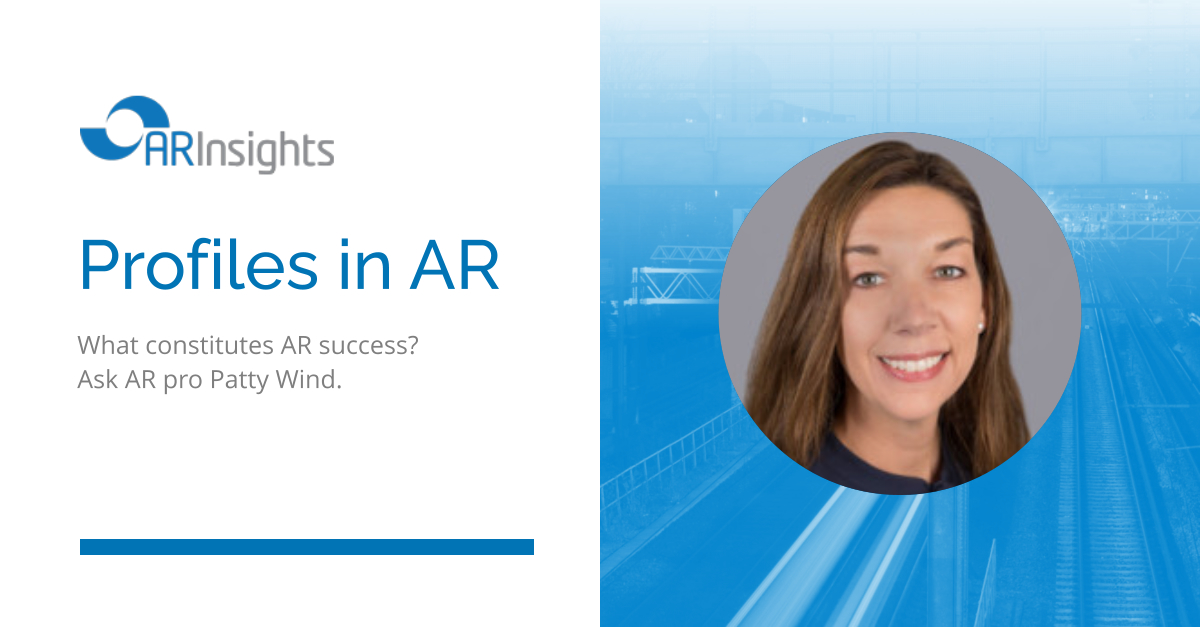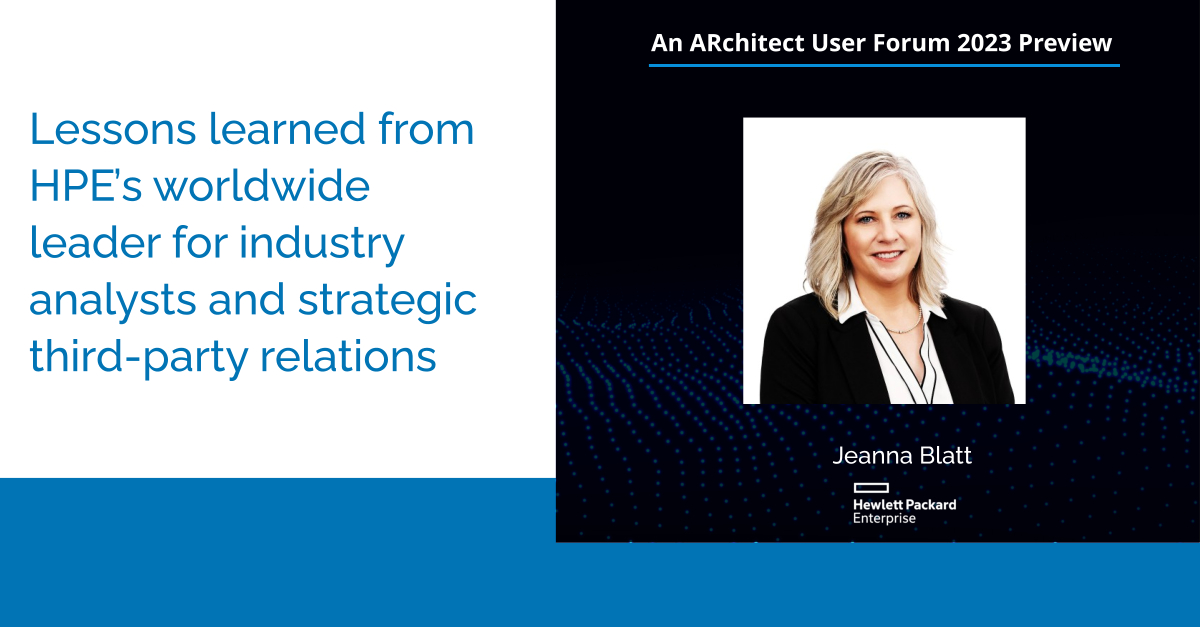When you’re looking for actionable analyst relations (AR) advice, it’s helpful to find someone who has been in your shoes; is experienced in driving AR results; and is abreast of current opportunities, challenges and trends. So our next “Profile in AR” is with Patricia Wind, who fits the bill completely!
Patricia (Patty) is principal and co-founder of AR firm The Wind Communications Agency, where she has been supporting clients since 2014. With 24 years of experience in technology communications — the last 22 of which focused on AR — Patty has managed analyst programs, events and activities for all types of companies, from tech giants to start-ups across industries. She also previously worked at Cognizant Technology Solutions and IT services firm Capgemini, managing their global analyst relations efforts within larger teams.
We were thrilled to connect with Patty recently. The conversation below shares her tips for engaging with analysts and measuring AR success, thoughts on common AR misperceptions and much more!
Q: What three adjectives would you use to describe analyst relations?
Patty: Analyst relations is:
- Strategic — Analyst relations requires making decisions in keeping with the company’s business objectives, and can impact the mission and vision.
- Varied — There are many well-understood tactics, and yet no two programs are exactly alike, and some are highly unique.
- Collaborative — Good AR programs involve senior leadership, technical staff, sales, marketing, customer reps, competitive intelligence and more.
Q: What do companies often not realize about analyst relations?
Patty: Many companies that have not yet undertaken an analyst relations program think it is all about the major reviews — Waves, Magic Quadrants, MarketScapes, etc. — and outbound communication. And, of course, those reports are high-profile and have a strong impact on the business. However, at the early stage, some companies are not as aware of how to run an inquiry program for insights and business direction, and how to use inquiries as another touchpoint with analysts.
They also don’t always realize that analysts are speaking with prospects every day and making tailored recommendations to end-users — instead thinking this mostly happens in written research. Many companies also tend to not have much insight into how to negotiate contracts with research firms, what you can build into the contract, how to manage seat-holders, etc.
Q: Tell us about The Wind Communications Agency. How do you work with clients?
Patty: We work very collaboratively with our clients. We aim to be a part of their extended team, and pitch in where they need our support and guidance. That could be anything from assisting with strategy, events or Gartner Peer Insights; to helping with major reviews; scheduling briefings; developing an inquiry program; conducting research for contract negotiations; providing AR operations support and so on.
For most clients, we work with one internal AR person to increase the team’s output. For some smaller clients, they do not have an internal AR person, and we serve as the entire AR function and work with their internal marketer regarding business direction and priorities. We put our time, effort and experience to work wherever they will have the most impact, and help clients determine which initiatives will be most fruitful in helping them reach company goals. While we have ongoing contracts with most clients, we have also supported shorter-term projects by adding extra bandwidth for analyst events or filling in for a team member’s leave.
Gartner Peer Insights is an area that is increasingly getting attention, and we’ve noticed teams need more support here because they often do not have the bandwidth to drive programs. We can pay attention to the details to drive reviews, secure first-time placement in Voice of the Customer reports and improve overall scores in priority markets.
Q: How can companies best partner with their AR agency?
Patty: It’s important to define strategy, priorities, goals and roles early. There is always the option of adjusting these later or being opportunistic if unexpected opportunities come up — but it’s far more work to start work down a path that isn’t well-thought-out and then try to change course.
Larger clients with the most productive early engagements typically know which of their offerings are within the top three-to-five in their market — or which could be with input from the analysts.
Finally, successful programs start with trust, and trust starts with communication. Prioritize regular check-in calls; frequent communication increases the odds of strategic wins.
Q: What’s the best way to get — and stay — on an analyst’s radar?
Patty: It’s important to have two-way communications with the analysts — that is, not just one-way briefings, but interactive inquiries as well.
One particularly effective way to get an analyst to internalize your messaging is through a document review inquiry. This is where an analyst, at a firm you’re contracted with, reads content that you submit — such as a sales deck, marketing collateral or a thought-leadership piece. The analyst then provides feedback, either via email or discussion.
To give worthwhile feedback, the analyst has to do a deep reading of the material, think about your goals, consider your audience and determine how best to communicate on your behalf. It’s a deeper interaction than getting a half-hour of the analyst’s top-of-mind thinking on your competitors or on their upcoming research.
Q: How can companies measure AR success?
Patty: This often depends on the priorities and business goals of the company, and at what stage they are in their analyst relations program. Some companies are just looking initially to get “on the map” with the analysts, some are looking to be the leader in multiple major reviews, and some need key insights from the analysts that will allow them to leapfrog their competitors — so we can measure meeting those goals in different ways.
In general, though, companies can measure AR success by tracking sentiment with their key analysts, how likely these analysts are to recommend their company and how often the analysts write about their company.
Of course, knowing about any shortlisting is also a key area to track, but that is not always very transparent. Perception audits with key analysts can always provide valuable feedback, and we like to include them in the AR planning for key milestones.
Q: What differences do you find between AR at an agency, compared to AR when you were in-house?
Patty: I enjoyed working internally on a team and learned so much from working in-house. My first boss was Molly Seibel when I was part of the Capgemini team for 10 years. Molly is an AR legend who is now retired. She was also a great mentor who helped me learn how to work well with key leadership early in my career and educate them about the strong impact that analyst relations can have on the business.
Now, at this stage of my career, I really enjoy bringing experience from both in-house work and client work to help new clients add differentiated thinking to their programs. I am able to have a view into multiple companies at one time to see how they are managing their analyst relations programs, what their priorities are and what is working well — and then bring best practices where they are needed.
It is really fun to see the positive results with the clients, and to see how AR is evolving in different ways at different companies. For one of our smaller clients, they’ve just been named a leader in a new Forrester Wave, and it has had a huge impact on their business. That’s a bit different than being at a large global company where they have many major reviews throughout the year and are already a known entity.
Q: In 4 sentences or less, what’s your best piece of AR advice?
Patty: If you undertake a strategy session or a key inquiry session, make sure your executives are open to following the advice of the analysts, and they are not simply going through the exercise. You don’t want to go through the time and effort of gathering the analyst insight, only to ignore it and go your own way. Analysts are experts in their space and have valuable perspectives to share — gleaned through in-depth research and frequent conversations with end-users and other vendors. Plus, they will remember if you chose not to follow their advice, and if your decision doesn’t work out, they often won’t hesitate to call it out.
Q: What are some of your hobbies and interests outside of work?
Patty: We have three kids, so we spend a lot of time with family. Living in Rhode Island, we like to spend a lot of time on or near the water too.
We also are all big music fans, so we are frequently at concerts. This year, we were able to make it to several concerts including the Newport Folk Festival, where there were several acts we all enjoyed.
In addition, we like to travel and are hoping we can take some family trips to see new places soon, after all the time at home during the height of COVID. I also enjoy reading (or listening to audio books) and learning more about entrepreneurship and business strategy.
***
Many thanks to Patty for sharing these valuable insights! If you want to reach Patty, you can connect with her on LinkedIn or on the Wind Communications LinkedIn page here.
And stay tuned for our next Profile in AR!




